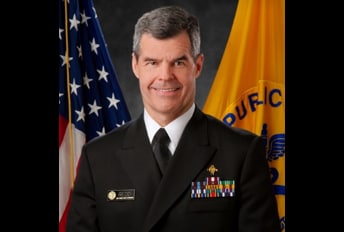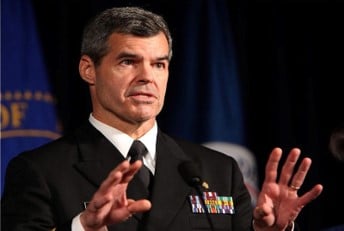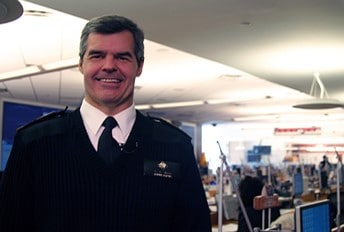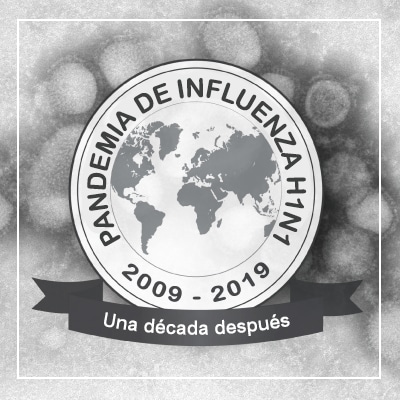Flu Fighter: Dr. Stephen Redd, MD
CDC’s Dr. Stephen Redd has deep and diverse experiences in responding to public health emergencies, including the 2009 H1N1 influenza pandemic during which he served as incident commander for the CDC’s response. For the past four years, Dr. Redd has directed CDC’s Office of Public Health Preparedness and Response, the group responsible for ensuring CDC is prepared to respond to a public health emergency. This includes making sure that CDC people are trained, emergency response systems are functional, and medicines and supplies are ready and available for any public health emergency, from hurricanes to global influenza outbreaks. When it comes to the 1918 flu pandemic, Dr. Redd says that moment in history is a stark reminder of the deadly nature of flu and why we must constantly update our plans to respond to a future flu pandemic.
Dr. Stephen Redd knows the immense challenges involved when protecting the U.S. from a flu pandemic. In his current role as the head of CDC’s Office of Public Health Preparedness and Response, he oversees CDC’s efforts to ensure not just that CDC is operationally ready, but also that state and local authorities are ready to respond to a health crisis like a flu pandemic.
Why the 1918 Pandemic Still Matters
The 1918 flu pandemic killed at least 50 million people around the world, including an estimated 675,000 in the United States. Dr. Redd says if a virus like that were to emerge today, “it would be a terrible event, and unfortunately, because flu is so unpredictable, there’s no way to know whether the next flu pandemic will be as bad as 1918.” When considering the impact of a pandemic today, Dr. Redd emphasizes that there are key differences in society and science today, compared to 1918, which would impact the spread of disease. “International travel has soared in recent years and the risk of rapid spread of disease is greater than during 1918.” However, we do have modern advancements to help slow the spread of disease that did not exist 100 years ago. “We have the ability to detect flu viruses, and the ability to make vaccines to prevent flu. We have antivirals to treat flu illness,” Dr. Redd says.
Being a Flu Fighter
Dr. Redd recalls substantial preparation in the three years before the 2009 H1N1 pandemic. “There were five functional exercises during which we practiced a pandemic response, including mock media interviews and conversations with the World Health Organization,” says Dr. Redd. The final exercise before the 2009 pandemic took place in October 2008. “When the pandemic occurred in 2009, we were able to respond as we had practiced. Those preparedness exercises definitely improved CDC’s ability to respond quickly and efficiently to the emergence of a new flu virus.” Pandemic flu response exercises remain an important component of CDC’s planning.
Planning and Preparation are Critical; Challenges Remain
While exercises and planning helped prepare the agency for a pandemic response, surprises and challenges still occurred, as they likely will during any public health emergency. Although the 2009 pandemic was considered milder than it could have been, future pandemics may be more severe. CDC must continue to expand its capacity to prepare for and adapt to emerging health threats. Over the past 10 years CDC has responded to and learned from a number of public health emergencies, from Ebola and Zika to devastating natural disasters. “Our office continues to learn and evolve from each response,” says Dr. Redd. “The information we gain from every response, helps us to be better prepared when we are faced with the next response, including the next flu pandemic.”
“CDC must remain vigilant in our preparation, but also in our ability to adapt and respond to the ever evolving influenza virus. Our job at the office of public health preparedness and response is to get everybody in the public health system ready for any public health emergency that may arise.”



